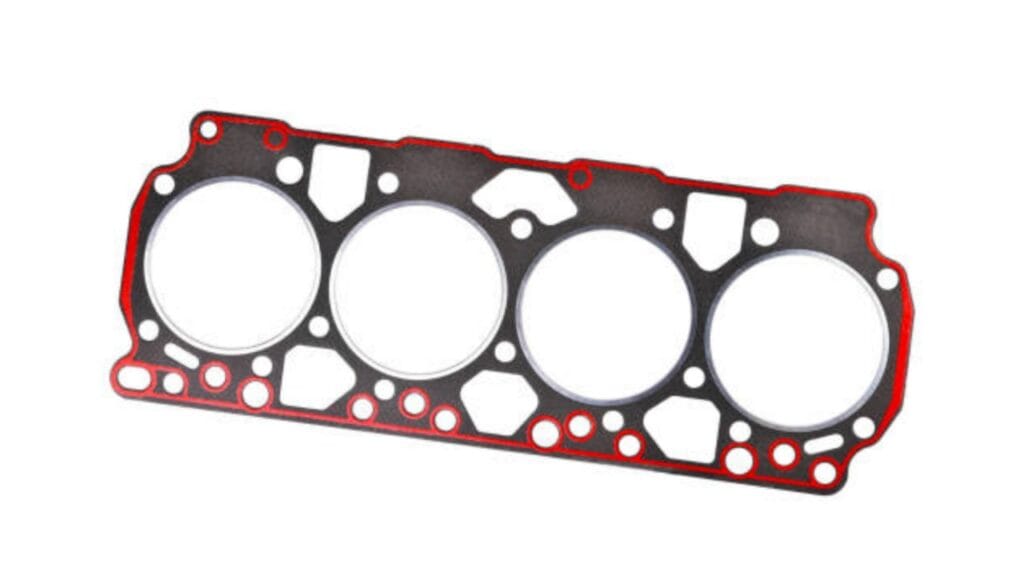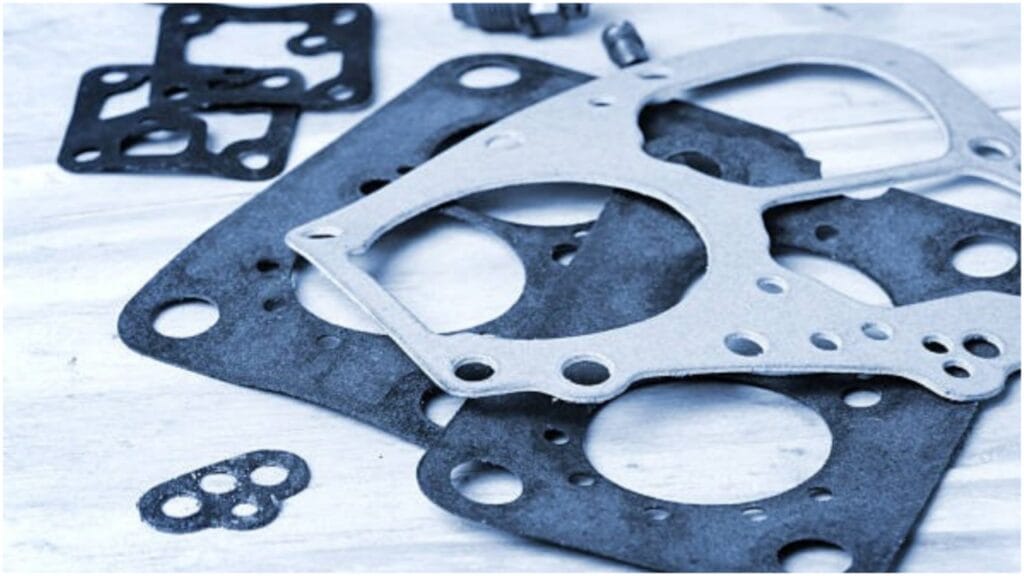A bad valve cover gasket can cause vacuum leaks. The gasket seals the engine’s valve cover. When it fails, it creates small gaps or cracks. These gaps allow air to enter the engine where it shouldn’t, disrupting its vacuum system.
The vacuum system is crucial for maintaining the proper air-fuel ratio. In some cases, it also affects your vehicle’s fuel efficiency. Oil leaks are another common symptom. Oil leaking from the valve cover gasket can spill onto hot engine parts, creating a burning smell or smoke.
It’s essential to fix the gasket problem quickly. Ignoring it can cause more damage to the engine. Replacing a bad valve cover gasket can restore proper vacuum and prevent further damage. Read the steps below to get a better idea.
What Exactly is a Valve Cover Gasket?
The valve cover is like the lid on a pot, and the gasket is the seal keeping all the steam (or, in this case, oil and air) inside.
The valve cover covers the valves and camshafts on top of the engine. The gasket creates an airtight seal between the cover and the engine, preventing oil from leaking and dirt from sneaking in.
How Does a Vacuum Leak Happen?
The engine relies on a controlled vacuum to regulate airflow. Think of it as a perfectly tuned orchestra. A bad valve cover gasket throws a wrench into the mix.
When the gasket fails, slight gaps or cracks form. These openings let extra air into the engine.
It’s like leaving a window open during a storm—everything gets out of balance. The engine sensors pick up on this unexpected air and try to compensate.
Signs You Might Have a Problem
The first clue is usually oil. You might spot leaks around the valve cover area. Sometimes, you’ll even catch a burning oil smell or see smoke under the hood.
Not all oil leaks indicate a vacuum problem, so looking for other signs, like a rough-running engine, is essential.
What Happens if You Ignore It?
When the air gets where it doesn’t belong, the engine’s performance tanks. Your fuel efficiency drops, your car might start stalling, and in some cases, you could damage other engine components.
Worst of all, leaking oil can drip onto hot parts of the engine, creating smoke or even a fire hazard.
What Can You Do About It?

Start by inspecting the valve cover area. If you see oil pooling or residue, that’s a clear sign. You can also listen for hissing sounds under the hood, which might indicate air escaping.
Replacing a valve cover gasket isn’t the most challenging but requires patience. You’ll need the right tools and a clean workspace.
If DIY isn’t your thing, leave it to the pros. They’ll replace the gasket and check for any other issues.
A Few Extra Tips
When it comes to car problems, prevention is always better than repair. Regular maintenance checks can catch things like a worn-out valve cover gasket before they cause trouble.
Also, pay attention to the type of gasket used during a replacement. Cheap materials won’t hold up well under heat and pressure, so it’s worth spending a little extra on quality.
Don’t ignore the little signs. That weird smell or rough idle is your car’s way of telling you something’s wrong.
The Unsuspected Villain
When it fails, it’s like a tiny villain wreaking havoc behind the scenes. It’s sneaky, too—its symptoms mimic other problems, so it often goes unnoticed until it’s too late.
Vacuum Leaks and Sensors
Your car’s sensors are essential. They constantly monitor air and fuel to ensure your engine runs smoothly. A vacuum leak caused by a bad valve cover gasket can confuse these sensors.
It’s Not Just the Gasket
While a bad valve cover gasket can cause a vacuum leak, it might not be the only issue. Cracked hoses or loose connections can also mess with your vacuum system. That’s why it’s always wise to do a thorough check.
Temporary Fixes Don’t Work

People have tried to seal a leaking valve cover gasket with tape, glue, or quick-fix products. But these don’t work.
They might hold for a day or two, but the heat and pressure of the engine will break them down. If you want a real solution, you need to replace the gasket.
Temperature
Engines run hot, and that heat is brutal on gaskets. Over time, the constant expansion and contraction make the gasket brittle.
This is especially true when driving in extreme weather or stop-and-go traffic. Heat cycles are relentless, and even the best gaskets eventually give in. This is the cause of the problem.
Trust Your Nose
The first sign of trouble is a smell. If you catch a scent of burning oil while driving, it’s worth investigating.
That smell often comes from oil leaking onto a hot engine block or exhaust. It’s not just unpleasant—it’s a warning that something isn’t right under the hood.
Oil Contamination
Leaking oil doesn’t just stay on the outside. It can creep into the engine, contaminating other components.
This can lead to sludge buildup, poor lubrication, and premature engine wear. A bad valve cover gasket is a potential cause of engine damage.
Why It’s Easy to Overlook
Valve cover gaskets aren’t glamorous. They’re not flashy or high-tech and hidden under the hood. Because of this, they often don’t get the attention they deserve. Regular inspections can change that.
A DIY Lesson

Replacing a valve cover gasket is a job that’s doable if you’re handy with tools. But don’t rush into it without preparation. You’ll need the correct gasket, a torque wrench, and patience.
Proper surface cleaning before installing the new gasket is key. If done right, it’s a satisfying fix that can extend the life of your engine.
Keep It Sealed
The valve cover gasket might be small, but it keeps your engine running smoothly.
Whether you’re a seasoned DIYer or prefer to leave it to the pros, understanding its role can help you make better decisions for your car. Keep an eye on it, and don’t let it slip under the radar.
FAQ’s
Can valve cover gasket cause vacuum leak?
Yes, a valve cover gasket can cause a vacuum leak, though it’s not the first thing people suspect. The gasket’s job is to seal the valve cover to the engine and keep the oil where it belongs.
However, many engines also have a Positive Crankcase Ventilation (PCV) system connected to the valve cover. If the gasket is damaged or worn out, it can disrupt the seal and let unmetered air into the system.
This creates a vacuum leak. A vacuum leak can mess with the air-fuel mixture, leading to rough idling, poor acceleration, or even a check engine light.
If you notice oil leaking near the valve cover and your engine isn’t running smoothly, the gasket could be the culprit.
Bad valve cover gasket sound?
A bad valve cover gasket doesn’t usually make a direct sound, but the problems it causes might. When the gasket fails, it can lead to a vacuum leak.
This leak disrupts the air and fuel mixture in the engine, which might create a hissing or whistling sound under the hood. The noise happens because air is being sucked into places it shouldn’t be.
Oil leaking from the gasket might drip onto hot engine parts, causing a faint sizzling or crackling sound. This often comes with a burning oil smell.
A rough idle or uneven acceleration can sometimes sound like misfires or stuttering. While these noises aren’t directly from the gasket, they’re a sign of the engine trying to compensate for the issues it’s causing.
If left unchecked, the gasket’s failure can worsen, potentially leading to louder symptoms or additional damage to the engine.
If you notice strange sounds paired with other symptoms like oil leaks or performance issues, it’s worth inspecting the valve cover gasket. Catching it early can prevent more significant, noisier problems later on.
How long to change valve cover gasket?
Changing a valve cover gasket typically takes about one to three hours, depending on the vehicle and your experience. For someone familiar with tools and basic car repairs, it’s a straightforward job.
But if you’re new to DIY autowork, it might take longer. The process involves removing the valve cover, cleaning the surfaces, and installing the new gasket precisely.
Some vehicles make it easier than others. It will be quicker to complete on older cars or those with more accessible engines.
Modern cars often have extra components, such as wiring harnesses or intake manifolds, that must be moved out of the way. This can add time and complexity to the job.
If you’re taking it to a mechanic, they can finish it within an hour or two. Labor costs vary depending on the amount of work involved.
Whether you do it yourself or rely on a professional, invest extra time to inspect nearby parts.
When is it too late to use head gasket sealer?
It’s too late to use a head gasket sealer when the damage exceeds minor leaks or small cracks. Head gasket sealer is designed as a temporary fix for early-stage issues, not severe ones.
If your engine overheats regularly, coolant mixes with the oil, or white smoke pours out of the exhaust, the damage is likely too advanced for a sealer to help.
At that point, the gasket has likely failed, and the structural damage requires a complete replacement, not a quick fix.
Using a sealer on a heavily damaged gasket makes things worse. It might clog other cooling system parts, like the radiator or heater core, leading to additional repairs.
If the engine has been running with a blown gasket for a long time, there’s also a risk of warped heads or cylinder damage. A bottle of sealer cannot solve these issues.
The best time to use a head gasket sealer is when you first notice small leaks or early symptoms like minor coolant loss.
Can you use blue devil head gasket sealer twice?
Yes, you can use Blue Devil Head Gasket Sealer twice, but it’s not always ideal. The product is designed to create a lasting seal for minor head gasket leaks.
If the first application didn’t entirely fix the problem, the damage could be more severe than a sealer can handle.
Using it a second time might work if the initial application wasn’t done correctly—for example, if the engine wasn’t properly cleaned or the instructions weren’t followed.
That said, repeated use of head gasket sealer isn’t a long-term solution. Overusing it can cause buildup in your cooling system, potentially clogging the radiator or heater core.
This can lead to additional overheating issues and even more costly repairs. If you’re considering a second application, it’s a good idea to flush the cooling system first.
This removes any residue from the first attempt and gives the new application the best chance to work.
If your car is still experiencing symptoms like overheating, coolant loss, or white smoke, the damage might be too severe. In that case, replacing the head gasket is the only reliable fix.
Conclusion
In the world of engine repairs, quick fixes like Blue Devil Head Gasket Sealer can be lifesavers—but only in the right situations. If caught early, sealers can buy you precious time and save money.
They’re not miracles for severe damage. You need to know when to apply a second round or move on to a permanent fix, like replacing the gasket.
Always follow the product’s instructions and listen to your car’s signals. Proper maintenance and timely repairs will keep your engine running smoothly, preventing minor problems from becoming costly disasters.

